Author

Juliet Clark is a six- time author, speaker and podcaster who has spent the last twenty years helping authors, coaches, speakers, and small businesses all over the world build expert audiences.
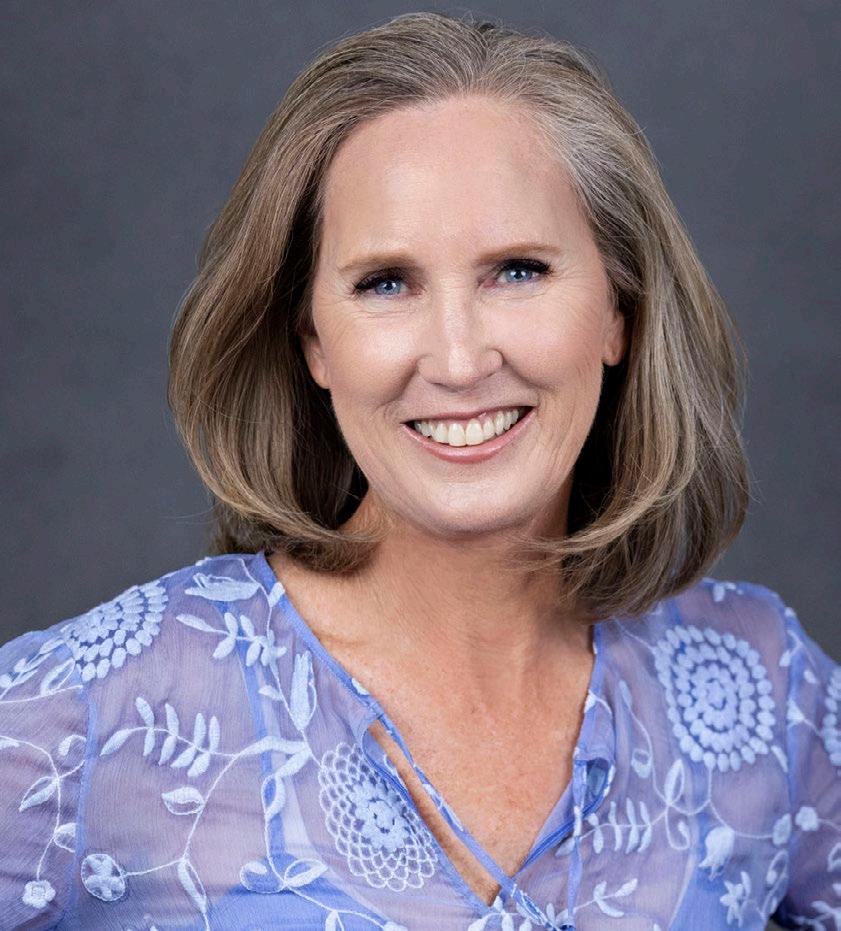
She started out as a mystery novelist and is best known or her books Gypsy, Granny Heist, and Dead by Dawn, and Pitchslapped. At age 46, she received a black belt in Tae Kwon Do and is an avid hiker and golfer.
Publisher’s Corner

Back-to-school, off to college, and the last days at the beach! More fun in the sun. In this month’s issue, Melanie Herschorn shares three tips to better email marketing. Every author needs to have an email strategy to grow their list and stay in communication with their audience.
Too much to juggle this month? Sara Burke shares some time management tips. It takes time to write a book, keep up with your business, and balance home life. Ready to publish? Juliet Clark shares the do’s and don’ts of publishing. Knowing the pitfalls of publishing prep could save you time and money.
This month’s book release is from our own Juliet Clark. The Author Success Handbook is all you need to build a strong author platform step-by-step. Without a platform, you don’t have a fan base or readers. Building a platform insures longterm success.
Love and gratitude, Juliet

Summertime is always the best of what might be.
~Charles Bowden
Discovering The PerfecT TiTle for Your non-ficTion Book



Everybody knows the adage, don’t judge a book by its cover. Yet, the book cover is based on the book title and people will judge a book by its title. They will either be attracted to the title or not. So how do you discover the most effective title for your book? First you must know your target audience or more precisely your avatar reader. Know the psychographics of the reader. Is your book positioned for a specific gender and age? The avatar reader will feel an alignment to your title because it is emotionally engaging and evokes a sense of connection as well as curiosity.
A non-fiction book will need a title and a subtitle. The title needs to be short. Two or three-word titles can be more impactful than longer titles. Although several best-selling books have one-word titles, it could be problematic when it comes to online searches. Typing one word into a search engine will pull up a list of many results.
A distinct abstract title can be very memorable, although it will need a concrete subtitle that contains key words for your subject. For example, one book I titled was The Slinky Effect, without the proper subtitle, the title can feel rather obscure.
AUTHOR BIO
Because the subtitle refers to ‘resilience in the workplace’ The title makes a lot more sense. A generic title is less brandable then a title that might be more suggestive and will make sense with a concrete subtitle under it.
Before choosing a title, do a search to see if there are any other books with the same title and see if you can buy the URL for the title. Book titles are not protected by copyright laws, although in some cases they may be protected by a trademark. I always recommend you have a few choices and run them by your trusted advisors to see which title scores the highest.
Jared Rosen is the founder Of DreamSculpt. As an innovator in digital media publishing, he has published over 50 media enhanced e-books for many best-selling authors and filmmakers and has published dozens of books in print. Jared is the author of three books including the groundbreaking book The Flip. As a thought leader he has presented in venues ranging from TED X Malibu, to McKinsey and Company, Sydney, Australia. In 2000, Jared co-created the Children’s Emotional Literacy Project endorsed by Mayor Richard Riordan and Norman Lear.
3 Author
how To Be Personal anD Professional on social meDia anD viDeo

We all have heard that beyond being the fabulous professionals we are, in order to help people, relate to us, we also need to be authentic and share some of ourselves in our social media posts.
I hear you ask: Is that really necessary? The short answer is, yes, it is! And there are two main reasons:
1. People buy from People, and
2. If you don’t control the conversation, the conversation will control you
What do I mean by that?
1. People connect with people, people trust people, and people buy from people they trust. Sharing your personality on social media helps
prospects see you, the person behind the brand, and that builds trust. And just to mention (as we are slightly biased); Video builds trust like no other medium out there today.
2. If you’re not sharing a defined personality and what you care about, your viewers will simply impose it upon you. It’s human nature! But you can choose what to share about yourself and then there is no space left, or only very little space left, for people to project personality traits on you that you may not care for.
I always recommend my clients to choose five personal topics to share about, and to stick to those five; at least until you get your sea legs and learn how this game of personal information on social media is being played.
When I got that advice a few years ago, I picked five things that still serve me
well years later. Here’s the personal side of me I share on social media:
1. I own a dog
2. I split my time between the Swiss Alps and New York City
3. I’m a certified Citizen Pruner in New York City
4. I share my photography and artwork
5. I love being in nature
I’ve tweaked speaking about my topics such that they have become learning experiences that fit within the framework of what I do as a Video Marketer and a LinkedIn Content Creator.
Now, I can share openly and personally and NEVER about personal things I didn’t want to talk about. It’s not that I have an amazing secret life, I just want to preserve some privacy; as we all want to and should do.
Author 4
Here’s one of my favorite examples of a brilliant content creator who knows how to be deeply personal and yet professional:
Quentin Allums is a highly creative video marketer who works with content creators on LinkedIn. He has 75’000 followers.
A few months back, I read a post of his and my first reaction was: “Oof, this is really personal. Where is he going with this?” He was talking about struggling with ADHD. What I learned is that a lot of creatives have ADHD (myself included).
His post was NOT about: “Poor me I have ADHD, and that’s why I missed some deadlines with y’all”.
The conversation was about: “This is what I have. This is how I deal with it. These are the checks and balances I put in place. How are you dealing with it”?
As I read the comments I wondered if there would be any haters, or negative reactions to such a vulnerable post. And there weren’t.
Quentin knows his audience! He didn’t share from the messy middle, but from a place of authority, vulnerability, and giving value to his audience. That is why Quentin has 75,000 followers and a thriving business.
He not only set the topic, but also the tone of the conversation.
And that’s exactly what you want to happen on LinkedIn be it with the help of video content or not.
Do you have a list of personal topics you use on social media? If not, create one and see how you can relate your topics to teachable moments for your ideal audience.
If you want to watch a video walkthrough of our content planning process? Email Nina at nina@ clockwiseproductions.com or DM on LinkedIn: https://www.linkedin.com/in/nina-froriep/.
Hi! We’re Robin Friend Stift and Nina Froriep of Clock Wise Productions, a New York City based video marketing company.

We teach authors, speakers, business coaches, and consultants to create easy and impactful video content for LinkedIn so they can enlighten, change, and disrupt the status quo of their industry. And we’re super excited that Juliet asked us to be your video marketing experts for 2023.
Over the next 12 months, we plan on giving you a quick overview of all aspects of video marketing to get your creative juices flowing and to get your most burning video marketing questions answered. AND, to that end we would love to hear from you! Send us a DM on LinkedIn or email Nina: nina@clockwiseproductions.com or DM her on LinkedIn: https://www.linkedin.com/ in/nina-froriep/.
Nina Froriep helps mission-driven entrepreneurs to grow their business with consistent and easyto-implement video marketing through one-onone coaching or peer-learning. I’m a filmmaker, producer and director with 30 years experience and a small business owner of 23 years. I’ve seen it all from the early days on independent features, to big national TV commercials, corporate megashows and many documentary films.
5 Author
Quentin knows his audience! He didn’t share from the messy middle, but from a place of authority, vulnerability, and giving value to his audience. That is why Quentin has 75,000 followers and a thriving business.
are You PuBlishing reaDY?

The publishing journey can be a rough ride if you are not prepared. One of the biggest mistakes authors make is not bringing a fully edited manuscript that is laid out in a word document the way the author would like the book to look. Here is a review of some of the items that authors need to be aware that publishers need. Bringing a full package to the publisher will save authors time and money.
MAnUscRIpT
Publishers require a fully edited manuscript. Publishers will communicate the allowable number of changes before the author begins to incur additional formatting costs. Once the first draft of the formatted book is created, corrections should be minimal, less than ten corrections that are grammar and spelling related. Formatting is not the time to edit or add and delete parts of the manuscript. We often run into situations where authors begin to re- write. Understand that you will be charged for excessive changes.
Front cover Design
Authors need to have a good idea what the cover should look like. We highly recommend that authors use a service like Fiverr.com or Upworks and work with a designer to bring a cover mockup to the publisher. Working creatively, one-on-one is a much more efficient way to get exactly the cover the author is looking for.
BIOs AnD HeADsHOTs
Every distribution platform has a designated spot for a bio to be added when the publisher uploads the book. The number
Author 6
of characters varies from platform to platform, so it is important to have a long bio. Medium bio, and short bio. The short bio should be about three to four sentences so it can be used on the back cover of the book. The longer bio should be about two hundred words and the medium bio about one hundred words. You will need these bios for publicity as well. It is important to make sure that all versions are fully edited.
Headshots should be current. Have one professional shot that can be used on the back cover and publicity purposes. We also like some images that are more casual to put on Amazon. As an expert, we want our authors to be approachable so show your readers you are just like them.
enDORseMenTs AnD FOReWORDs
Start gathering these early. They are more difficult and time- consuming to get than most authors understand. When authors receive these, it is important to make sure you have them edited. About half of the forewords we receive need editing for one reason or another. When it comes to endorsements, make sure that they are short. Some may be used on the back cover and there is a limited amount of room on the back of the book.
BAck cOveR cOpy
Have your back cover copy written and edited. The number one correction we have on back covers are grammar and spelling errors. Taking this a step further, consider paying a copywriter to write the back cover in a way that is enticing for a reader to purchase.
IMAges AnD gRApHs
All images need to be 300 dpi or better to translate into the print book. Add images judiciously and remember that if the images are color and the book is black and white, they may not translate well. Most of the extra charges that occur in a black and white book are because the quality of the images was not up to standard and did not convert well in formatting and print.
ADDITIOnAl InFORMATIOn
Most publishers will ask about citizenship and birthdays. When copyrights and Library of require some personal information. Make sure that you have that handy and feel free to share with your publisher.
Taking the time to have all of these pieces in place will save you time and money. Every time the publisher sends a manuscript or cover back to the formatter incurs costs. You will want to get it right the first time so you do not have any charges that you did not anticipate.
Juliet Clark is a six- time author, speaker and podcaster who has spent the last twenty years helping authors, coaches, speakers, and small businesses all over the world build expert audiences.
She started out as a mystery novelist and is best known or her books Gypsy, Granny Heist, and Dead by Dawn, and Pitchslapped. At age 46, she received a black belt in Tae Kwon Do and is an avid hiker and golfer.
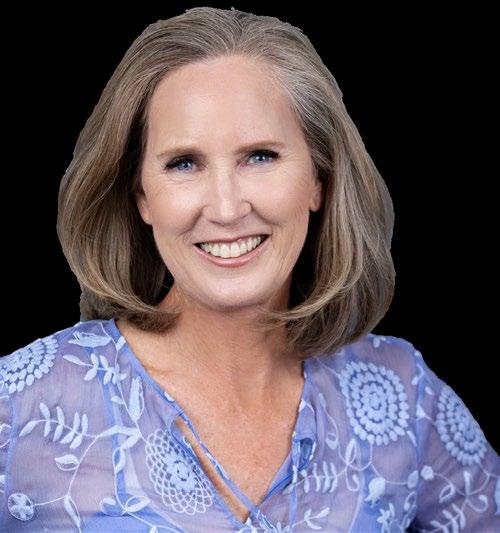
7 Author
Every time the publisher sends a manuscript or cover back to the formatter incurs costs.
JulIet Clark
kJ: you are one of the leading publishers in the country. What do you see as the biggest problem for authors today?
JC: The biggest problem I see, and I see it over and over again, is that authors think all they have to do is write their book and the readers will find them. The hard cold truth is that, if you don’t have a platform built, you don’t have anybody to sell to. I can’t be any more blunt than that.
kJ: That would be very important for anyone using a book to build their business.
JC: Absolutely. It’s absolutely essential that authors learn how to build an effective author platform. Back when digital marketing was new, people would just click and buy a $2000 program. But then they started to realize that people weren’t delivering what they promised. Now people want a relationship with you first before they invest their money. They want to know, like, and trust you. Creating that trust means you need an effective author website and funnel. You must provide great content to get people following you on social media, and transition them off social media and on to your own list.
kJ: It’s about relationships now. JC: Yes. And the absolute best way to start building a relationship is with a book. They read your words, hear your voice, decide if they like your message, and by extension, you. Even though books are getting more expensive because of the rising costs of paper and distribution fees, a book is still the best nurture tool out there.
kJ: We’ve talked a lot about when is the best time to start building your platform.
JC: Yes, and the answer is before you start writing or at least a year in advance. You need time to build it out and learn how to use the tools you will create. There’s a huge learning curve with learning digital marketing. You have to have your audience nailed. You must be clear on your zone of genius because you can’t do this by yourself. You also have to know how to tweak it as you go. Everyone in digital marketing knows it doesn’t go smoothly the first time.
kJ: What’s the high spot in this? JC: Whatever you learn to build for your book you can also use in your business. That’s a huge benefit. Once you learn this, you can recreate it for anything you do.
kJ: you have a book coming out that helps authors do exactly what you’re talking about. What is the title?
JC: My book is titled The Author Success Handbook: A Step-by-Step Guide to Building and Leveraging Your Platform.
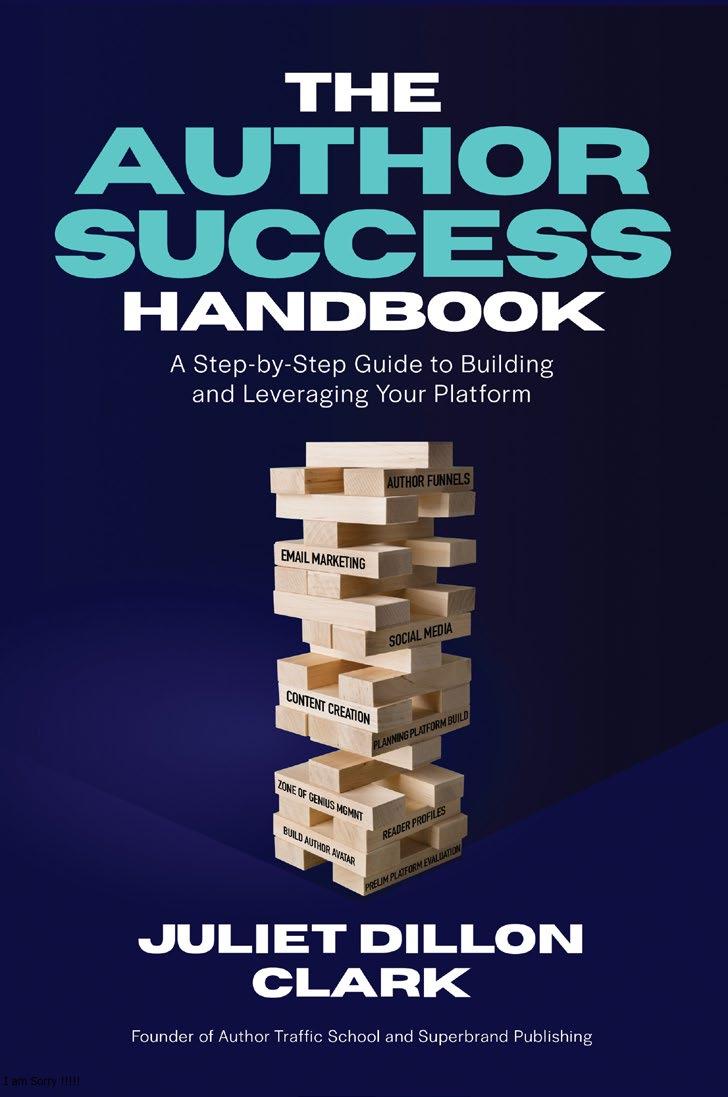
KJ: Where can we find it?
JC: Everywhere. Amazon, Barnes and Noble, Apple Books, and so forth.
KJ: I know it’s a wonderful book because I had the privilege of editing it! So folks, if you want to build your platform, now is the time. Here’s the link: The Author Success Handbook: A Step-by-Step Guide to Building and Leveraging Your Platform - Kindle edition by Dillon Clark, Juliet. Reference Kindle eBooks @ Amazon.com.
Kristy Boyd Johnson is an award-winning children’s author, and has ghostwritten over 30 books for entrepreneurs over the years. She is a sought-after developmental editor and transformational book coach. She recently launched Starseed Journey Retreats because she can’t imagine anything better than being a beautiful location with beautiful people who want to reconnect with their deepest selves through writing.
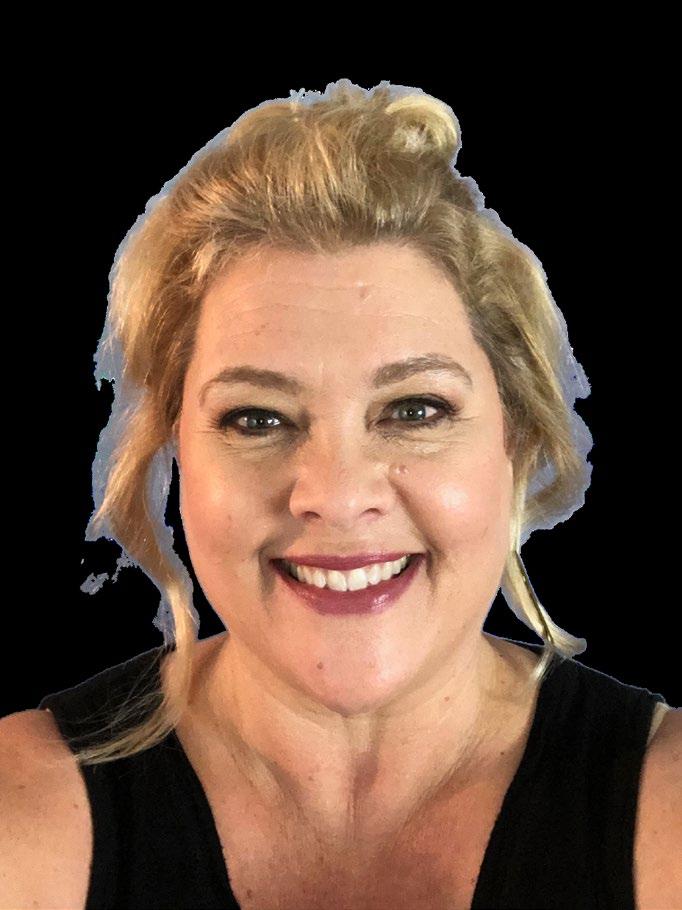
IntervIew wIth
Author 8
unloCkIng Your wrItIng PotentIal MasterIng tIMe

ManageMent for authors
As an author, you understand the importance of honing your craft and constantly improving your writing skills. However, one aspect that often gets overlooked is time management. Effectively managing your time can make a world of difference in your writing journey, allowing you to maximize your productivity, stay focused, and unleash your full creative potential. Let’s delve into the world of time management for authors and share valuable tips to help you become a better writer.
1. set clear goals and priorities: Start by defining your writing goals and priorities. What do you want to achieve? Is it completing a manuscript, submitting articles to publications, or increasing your daily word count? Once you have a clear vision, break your goals down into smaller, actionable tasks. Prioritize these tasks based on their importance and urgency and create a schedule or to-do list to keep yourself on track.
2. create a Writing Routine: Establishing a consistent writing routine can be immensely beneficial for authors. Find a time of day when you are most alert and creative, and designate it as your dedicated writing time. Whether it’s early morning, late at night, or during lunch breaks, having a set routine helps condition your mind for writing, making it easier to get into the flow and produce highquality work.
3. eliminate Distractions: Identify and eliminate potential distractions that hinder your writing process. Turn off notifications on your phone or computer, find a quiet and peaceful writing space, and inform your family or housemates about your writing schedule to minimize interruptions. Consider using productivity apps or website blockers to stay focused and prevent time-wasting activities while you write. I use a checklist before I start writing, to set the tone for that writing block. My checklist consists of things like: silence, phone, get coffee or water before you start (or I will get up for a drink – I know myself), give dogs bones or toys (they will interrupt me if I don’t – I know them too).
4. Use Time-Blocking Techniques: Time blocking involves dividing your day into specific blocks of time dedicated to different tasks. Allocate focused writing periods and set a timer for a predetermined amount of time, such as 25 minutes (known as the Pomodoro Technique). During these blocks, solely focus on your writing without any distractions. After each block, take a short break before diving back in. This method helps enhance productivity and prevent burnout.
5. embrace the power of Deadlines: Deadlines can be powerful motivators for writers and don’t have to come from an external source. Set realistic deadlines for your writing projects and hold yourself accountable to meet them.
If self-imposed deadlines aren’t effective for you, consider joining writing groups or participating in writing challenges that provide external deadlines and accountability.


6. prioritize self-care: Taking care of your physical and mental well-being is essential for optimal creativity and productivity. Make time for regular exercise, maintain a healthy diet, get enough sleep, and practice relaxation techniques, such as meditation or yoga. A healthy and balanced lifestyle enhances your ability to focus, generates fresh ideas, and fuels your writing passion.
7. continuous learning and Improvement:
Invest in your writing skills by seeking ongoing education and improvement. Attend writing workshops, join writing communities, and read books on the craft of writing. By continuously learning, you’ll discover new techniques, gain valuable insights, and refine your writing style.
By implementing effective time management strategies, authors can unlock their full potential, boost their productivity, and enhance the quality of their writing. Remember, time is a precious resource, and managing it wisely is key to becoming a better writer. Embrace these tips, tailor them to your unique writing process, and watch your creativity soar as you make the most of your time on your writing journey.
International Content Expert Sara Burke is the Founder of HLCC, a content creation firm dedicated to boosting small businesses around the world. Sara has authored three books, and ghostwritten over 100 books, ebooks and workbooks. Sara recently launched The New American Dream, a podcast dedicated to helping business owners understand how our changing business ecosystem can support their success.
9 Author
3 Tips to Grow Your Email List
Building an audience of targeted readers, especially if you’re only using social media, can be a very long process. And because the algorithms determine how your content is shown, you are not the one in charge.
The good news is, there is a way for you to have more control over who sees your content and when–with email marketing.
So if you desire to grow an audience and have instant access to them, start building an engaged email list. Email is an often overlooked, but powerful tool to connect with readers, share valuable content, and promote your book without being reliant on any algorithm.
Ready to grow your list? Here are three steps you can take starting today to build up your subscriber base:

Author 10
1. OFFeR An IRResIsTIBle leAD MAgneT.
One of the most effective ways to entice readers to join your email list is by offering a valuable, free resource that gives the potential reader a quick win. This could be an e-book, a checklist, a mini-guide, or exclusive access to bonus content. By providing something of value in exchange for their email address, you can attract the attention of your target audience and incentivize them to sign up. PSA: Do not offer the first chapter of your book unless you truly believe in your heart that it will get them so excited about joining your list. When in doubt, don’t do it.
2. cReATe cOMpellIng OpT-In FORMs.
Does your author website feature welldesigned and strategically placed optin forms, such as pop-ups, slide-ins, or embedded forms? Are the links in your social media bios sending people to download your lead magnet? If not, you’re leaving money on the table. A big mistake authors often make is not collecting email addresses. When you use persuasive copy that clearly communicates the benefits of subscribing to your email list, they won’t be able to click the x in the corner. Be sure to experiment with different form placements and designs to find what works best for your website and audience.
3. cOllABORATe WITH OTHeRs.
Collaborating with influencers or experts in your niche can expose your work to their established audiences and help you grow your email list. Consider hosting joint webinars, creating guest blog posts, or participating in podcast interviews. You can also co-host giveaways or contests to create buzz. This cross-promotion exposes you to a new audience who may be interested in your expertise, increasing the likelihood of gaining new subscribers.
When you provide tons of value and nurture the people on your list, you will be cultivating relationships with ideal readers (who could become clients and customers), expanding your author platform, and ultimately setting yourself up to increase book sales. The key is to consistently provide value to show your expertise.
If you would like guidance on creating your book marketing strategy (with email marketing too, of course) download your copy of the Ultimate Book Marketing Checklist today at vipbookmarketing.com/checklist.

Melanie Bio
Melanie Herschorn wants to make your book and brand sparkle online. As a content marketing strategist for coaches, consultants, and speakers worldwide, she’s on a mission to support and empower her clients to create clear messaging and content that shines a light on their individual experience, skillset, and books. With her unique combination of entrepreneurship, award-winning journalism and PR experience, Melanie guides her clients to attract and nurture leads and position themselves as industry experts. She also loves to provide book marketing tips on her show, AUTHORity Marketing LIVE!
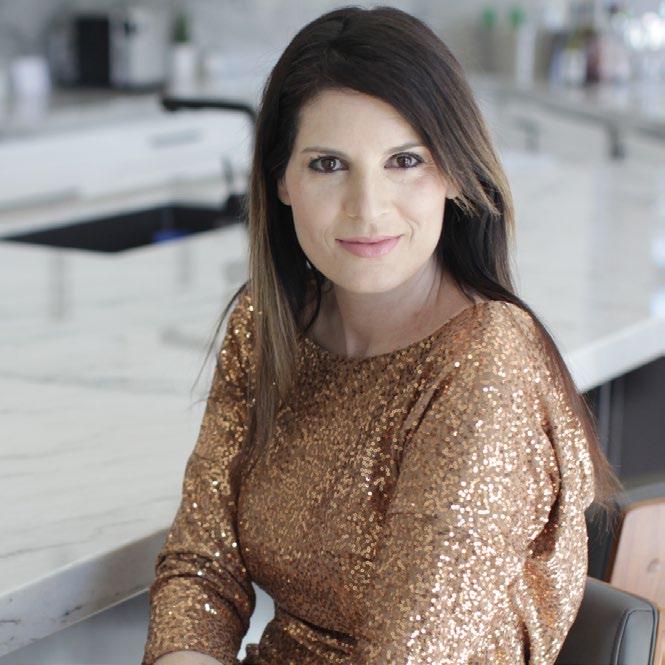
11 Author
a new PlaCe authors Can Call hoMe
ABUnDAnce OF specIAlIzeD knOWleDge
One of the significant advantages of venturing beyond Facebook is the exposure to communities dedicated to specific interests. Within these specialized communities, authors gain access to a treasure trove of knowledge as likeminded individuals share insights, experiences, and recommendations related to their craft. This targeted focus enables authors to explore topics deeply and engage in meaningful conversations with experts and enthusiasts who share their passion.
In the era of social media dominance, platforms like Facebook have achieved widespread popularity and are commonly used for creating and nurturing virtual communities. The rise of alternative platforms, such as Heartbeat and other independent communities, offers a refreshing change. These platforms give authors, and readers access to a wealth of information while minimizing distractions caused by unrelated posts. This article delves into the benefits of participating in or establishing independent communities that extend beyond the limitations imposed by social media.

ReDUceD DIsTRAcTIOns, enHAnceD FOcUs
Facebook’s algorithm-driven news feed bombards users with overwhelming posts, often unrelated to their specific interests. Authors for instance, may find it challenging to navigate through the noise to discover valuable content. Alternative platforms like Heartbeat provide a streamlined experience, allowing them to focus solely on literary discussions and resources without distractions. The
Author 12
absence of constant notifications and unrelated content enhances concentration, helping authors stay productive and engrossed in their writing journey.
sUppORTIve AnD engAgIng cOMMUnITy
In contrast to the often impersonal nature and limited depth of Facebook groups, independent communities foster a sense of camaraderie and genuine connections. These communities consist of genuinely passionate individuals about literature and writing, creating an environment conducive to collaboration and support. Members often provide constructive feedback, valuable insights, and encouragement to fellow authors. By joining or starting their independent communities, authors can find solace in the understanding and encouragement of like-minded individuals who share their struggles, triumphs, and aspirations, ultimately fueling their creative growth.
FReeDOM TO sHApe cOMMUnITy cUlTURe
When authors create their communities outside of Facebook, they gain the freedom to define the culture and values of the space. By curating the guidelines and moderation policies, authors can ensure that the community promotes constructive discussions, maintains a respectful tone, and aligns with their vision. This autonomy enables authors to foster an inclusive environment that
encourages diversity of thought, nurtures creativity, and supports the well-being of its members. The ability to shape the community culture ensures that authors can foster an atmosphere conducive to their specific needs and aspirations.
While Facebook has been a dominant force in social media, independent communities like Heartbeat offer a refreshing alternative for authors. These platforms provide access to specialized knowledge, minimize distractions, foster engagement, and allow authors to shape the community culture. By exploring and participating in such communities, authors can thrive in an environment tailor-made for their creative pursuits.
For the author’s journey to new heights, it’s time to join the Business Acceleration Network’s Heartbeat community. As a Trailblazer, authors gain exclusive access to a vibrant online community and business academy, including collaboration with other writers in the esteemed Authors Corner. Rub shoulders with influential publishers such as Juliet Clark of Superbrand Publishing and connect with fellow authors who are as dedicated to their craft to make a difference with the world. Don’t miss out on this opportunity to amplify writing and be part of a community that empowers success. Join the Business Acceleration Network Club today! www. BusinessAccelerationNetwork. com/club - Mention Breakthrough Author Magazine for a complimentary strategy session with a business mentor of your choice!
Shannon Procise has successfully attained over $3.2M in FREE publicity and is notorious for being the owner of the “Million Dollar Rolodex” and teaching others how to do the same. She has trained and coached thousands of individuals in marketing, event production, business development, and personal growth.
Shannon is the creator of a magnetic community - the Business Acceleration Network, where she guides businesses to build a successful enterprise while having fun and making lots of money.
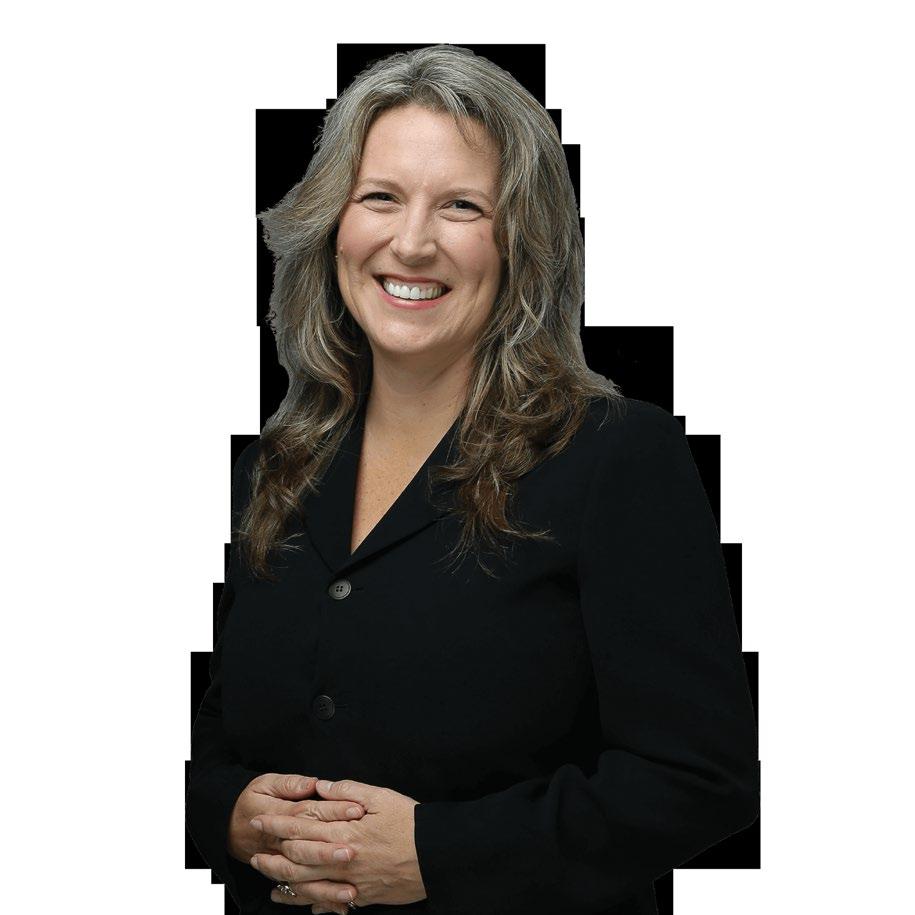
13 Author
As a Trailblazer, authors gain exclusive access to a vibrant online community and business academy, including collaboration with other writers in the esteemed Authors Corner.
Transforming a Book inTo a Course
unleashIng the Power of knowledge
Have you ever written a book that you poured your heart and soul into, only to find that it didn’t reach as many people as you had hoped? you’re not alone.
Many authors are discovering a transformative way to leverage their book and reach a broader audience: transforming it into a course. In this article, I’ll share with you the benefits, advantages, and five crucial steps to embark on this exciting journey.
When some authors initially publish a book, they have a modest following, but they know there are countless others out there who could benefit from my knowledge and experiences. Doing so could revolutionize your career and propel your message to new heights.
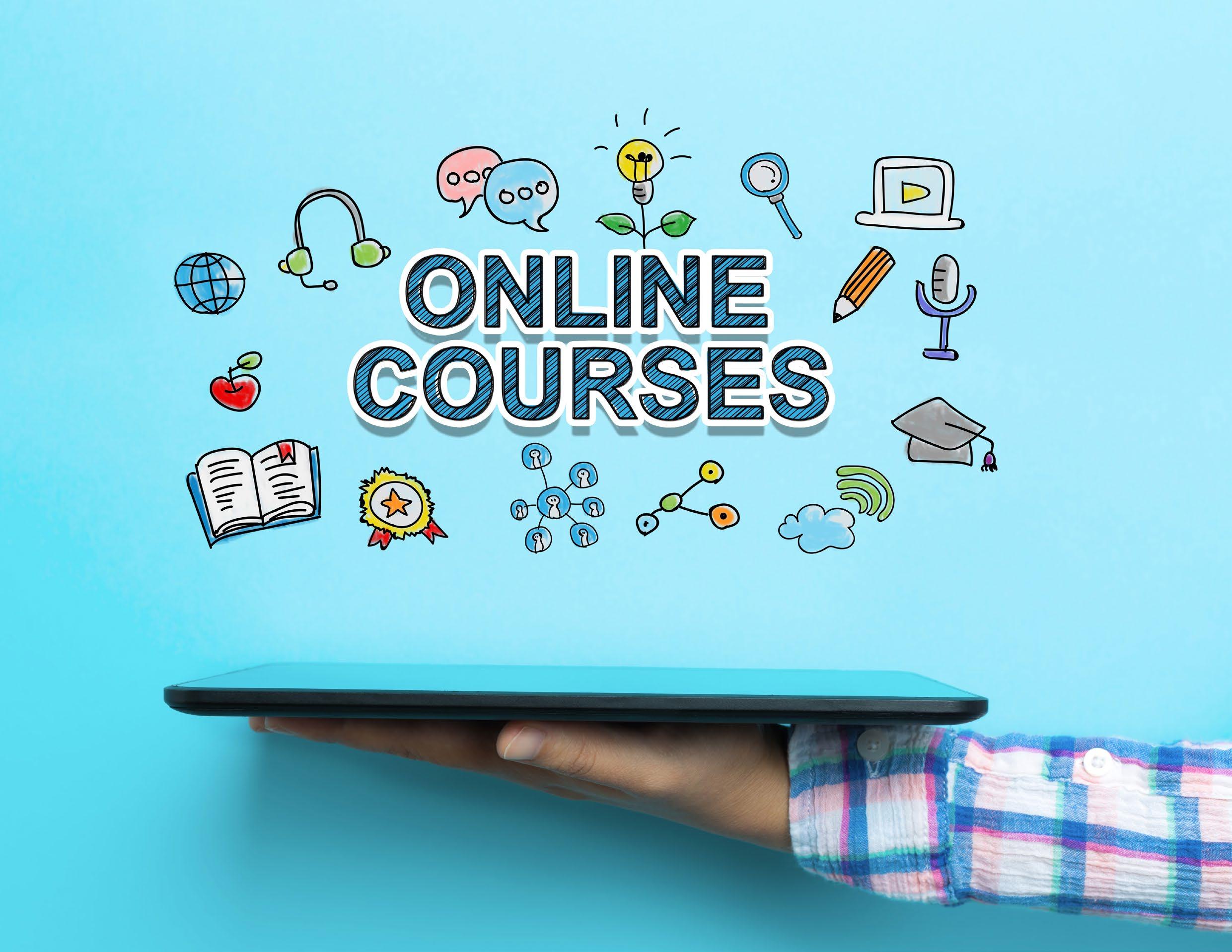
Author 14
So, why should authors consider transforming their books into courses? First and foremost, it allows you to reach a wider audience. Not everyone has the time or inclination to read a book cover to cover, but they may be eager to engage with your content in a more interactive and structured manner. By offering a course, you provide an alternative format that caters to different learning preferences and expands your potential reach.
Additionally, transforming a book into a course enables you to monetize your expertise further.

While book sales are a valuable revenue stream, courses often command higher price points.
By packaging your knowledge into a comprehensive learning experience, you can increase your earning potential and establish yourself as an authority in your field.
Now, let’s dive into the five key steps to transform your book into a course: Planning, Promotion, Preparation, Production, and Publishing.
1. Planning: Start by defining your course’s objectives, target audience, and structure. Identify the key concepts and chapters from your book that will form the foundation of your course.
2. Promotion: Spread the word about your upcoming course. Leverage your existing network, engage with potential students through social media, and create compelling content that highlights the benefits of your course. Capture their interest and build anticipation for the launch.
3. Preparation: Assemble all the necessary resources and materials to create a comprehensive learning experience. This includes creating engaging slides, developing worksheets or exercises, and planning any additional resources or guest expert contributions.
4. Production: Record your course content in a format that suits your style and audience preferences. You can opt for video lessons, audio recordings, or a combination of both. Ensure that the production quality is professional and reflects the value you offer.
5. Publishing: Once your course content is ready, choose a platform to host and sell your course. There are various online learning platforms available, each with its own set of features and pricing models. Select one that aligns with your goals and integrates seamlessly with your website or blog.
As you embark on this transformative journey, I invite you to download our eBook, “5 Ways to Get More Bang for Your Book.” In this guide, we delve deeper into the strategies and tactics that will help you maximize the potential of your book and course. Visit our website at www. theauthorsleverage.com/ebook to grab your free copy and gain valuable insights to fuel your success.
If you’re ready to take your bookto-course transformation to the next level, consider exploring a Book to Course Concierge service. Our team of experienced professionals will guide you through the entire process, from planning to production, ensuring a seamless transition that captures the essence of your book and delivers an exceptional learning experience. Learn more about our Book to Course Concierge at www. theauthorsleverage.com
Transforming a book into a course is a game-changing strategy that enables authors to expand their reach, monetize their expertise, and provide a more interactive learning experience. So, why wait? Begin your book-to-course transformation today and embark on an exciting new chapter of your career.
Parchelle Tashi is an award winning creative entrepreneur, popular podcast host, and creator of The Author’s Leverage. A former high school math teacher turned tech-preneur, she’s an education design architect and video producer with a Masters in Curriculum & Instruction from Virginia Tech.

15 Author
how to utIlIze PodCastIng to Boost Book sales as an author

In today’s digital age, authors have access to a wide range of platforms to promote and sell their books. One powerful tool that has gained immense popularity is podcasting. Podcasts offer a unique opportunity to connect directly with a targeted audience and build a loyal following. By leveraging the reach and influence of podcasts, authors can effectively boost book sales and enhance their author brand. Here are some strategies on how to utilize podcasting to sell books as an author.
1. start your Own podcast: Consider launching your own podcast where you can discuss topics related to your book, share behind-the-scenes insights, and interview industry experts. This allows you to showcase your expertise and engage with your audience on a personal level. Make sure to promote your book within the podcast episodes, providing valuable information and encouraging listeners to check out your work.
2. g uest Appearance on Relevant podcasts: Research and reach out to popular podcasts within your book’s genre or niche. Offer to be a guest on these podcasts, discussing your book, writing process, and any unique insights you can share. This provides exposure to a targeted audience who are already interested in the type of content you create. Be sure to include a compelling call-to-action, such as mentioning where listeners can find and purchase your book.
3. c ollaborate with Book Review podcasts:
Many podcasts focus on book reviews and recommendations. Seek out these podcasts and offer a copy of your book for review. If they feature your book on their show, it can generate significant exposure and interest from their dedicated audience. Be prepared to provide review copies or arrange interviews to discuss your book further.
4. Offer exclusive content or Discounts: Create a sense of exclusivity for podcast listeners by offering bonus content, such as additional chapters, character profiles, or deleted scenes. You can also provide limited-time discounts or promotional codes for listeners to purchase your book at a special price. This incentivizes listeners to take action and can increase conversion rates.
5. engage with listeners and Build Relationships: Encourage listeners to connect with you on social media or through your author website. Respond to their comments, questions, and feedback. Building relationships with your audience fosters loyalty and encourages them to spread the word about your book. Consider running giveaways or contests exclusively for podcast listeners to further engage and reward their support.
6. Utilize show notes and episode Descriptions: Ensure that each podcast appearance is accompanied by detailed show notes (think: blog post) or episode descriptions that include links to your book’s landing page, online retailers, and your author website. This makes it easy for listeners to find and purchase your book after listening to the podcast episode.
By incorporating podcasting into your book marketing strategy, you tap into a dynamic and growing medium that allows you to connect directly with your target audience. The intimate nature of podcasting enables you to build trust, establish your authority, and generate excitement around your book. With consistent effort and strategic promotion, podcasting can be a valuable tool for boosting book sales, expanding your reader base, and increasing your author brand’s visibility in the market.
Tracy Hazzard is a seasoned media expert with over 2600 interviews from articles in Authority Magazine, BuzzFeed, and her Inc. Magazine column; and from her multiple top-ranked videocasts and podcasts like The Binge Factor and Feed Your Brand – one of CIO’s Top 26 Entrepreneur Podcasts. Tracy brings diverse views from what works and what doesn’t work in marketing, branding and media from thought leaders and industry icons redefining success around the globe. Tracy’s unique gift to the podcasting, marketing, and branding world is being able to identify that unique binge-able factor – the thing that makes people come back again and again, listen actively, share as raving fans, and buy everything you have to sell.

Author 16
the sIt-down IntervIew and deMo segMents
Acquiring confidence and understanding about the interview format is instrumental in preparing and handling your television appearance. Let’s start with the basics. There are four distinctive types of interviews you need to be aware of before you set foot in a studio or even pitch a producer. Each type has its own particular requirements in terms of your participation. Understanding the differences between interview types will give you the understanding of how the end result is assembled and your responsibility as a participant.
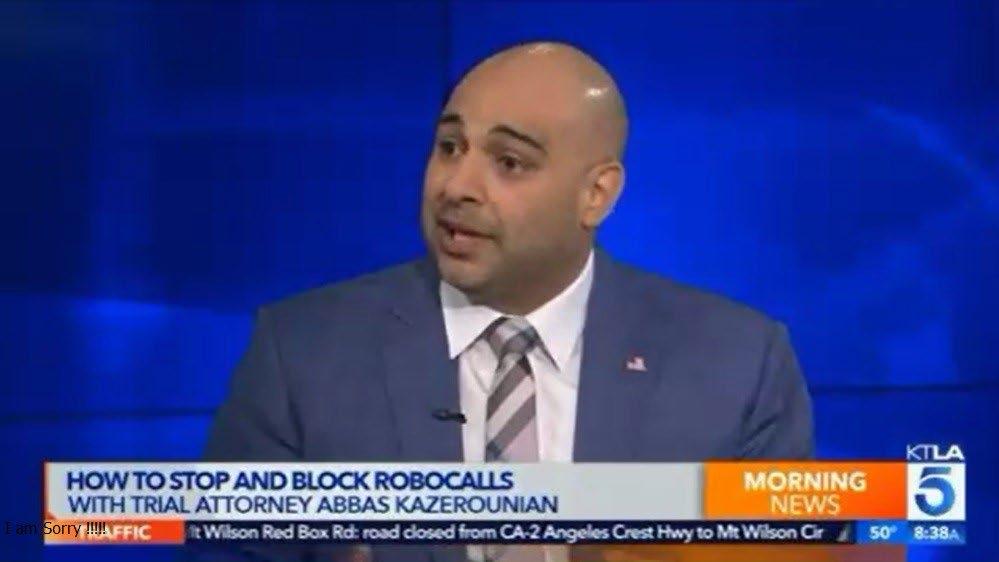
The four styles are: 1) Sit-down Interview; 2) Demo Segment; 3) Satellite; 4) ENG or Field Interview.
Let’s review the first two: the SIT-DOWN INTERVIEW and the DEMO SEGMENT.
THE SIT-DOWN INTERVIEW
This is the most typical type of interview that you will see on The View, Super Soul Sunday, Live with Kelly and Ryan, and on the couch with any of your favorite morning show hosts. These are generally promotional interviews by featured actors or authors talking about their latest projects. But these types of interviews also very much include experts, or Guestperts, discussing a recent study or a current event about which they are particularly knowledgeable. What defines the sit-down
 Excerpt from The Ultimate On-Camera Guidebook: Hosts*Experts*Influencers by Jacquie Jordan (@TVGuestpert) & Shannon O’Dowd (@theshannonodowd)
Excerpt from The Ultimate On-Camera Guidebook: Hosts*Experts*Influencers by Jacquie Jordan (@TVGuestpert) & Shannon O’Dowd (@theshannonodowd)
17 Author
interview is that it is an in-person, usually instudio, interview with a host facilitating the discussion. These shows are live or live-to-tape, where the interview is treated as if it is live even when it is actually prerecorded; no postproduction/editing will be applied to the show, except in rare instances, and almost never for the guest expert’s comments, which takes me back to my earlier maxim to mean what you say and say what you mean. Wherever possible, do not say it meanly! A live-to-tape show is usually cut to time, not to content.
Release forms are required for live-to-tape shows, but not live shows. The reason for this is that it protects the show from editing to time, whereas a live show is happening in the moment, so guests can’t accuse a show of manipulating their content. It is good to familiarize yourself with a guest release form prior to arriving on set, as the legal language is quite intimidating. This is why on-camera training is so important. If you are in command of your content, you won’t carry the unnecessary fear that your words can and will be used against you. In the back of my first book, Get on TV!, I include a standard guest release form to review.
A DEMO SEGMENT
“Demo” is short for demonstration. We recognize these segments as cooking segments, fashion segments, and beauty product or techno-gadget segments. Shows like Rachael Ray, Hallmark’s Home & Family, CMT’s Pickler & Ben, The Today Show, The Doctors, The Dr. Oz Show, and Good Morning America include typical demo-style segments where the action happens standing up at a demonstration table.
Demo segments can be in-studio or remote, as in someone’s home kitchen. You want to be prepared with visual aids for these types of interviews. If it’s a fashion segment, bring models. If it’s a food segment, bring plates, food, and extra decorations if necessary. We are really big on making sure that our Guestperts produce a visually decorative and appealing demo segment. This is as important as the execution itself, and it’s often something we like to block out during on-camera training sessions.
Demo segments are fun for hosts and particularly attractive for producers, because they easily entertain the viewers beyond the typical “talking head” segment.

Author 18
If it’s a tech segment, you will need to bring the items for a table display. Make everything unique and have fun with your segment. In different affiliate markets, you can repeat the same demo segment— for example, in Nashville and San Diego—since you aren’t repeating the same audience.
We had an experience recently sending out an expert to do a demo segment that I hope will serve as a cautionary tale. Since we are in the Los Angeles TV market, which is the second-largest television market in the nation, we often send our less experienced clients to smaller markets, where the risk is less. It gives them good exposure and brings something unique to a local audience. In this cautionary tale, the demo segment pitched was titled “Weeds in Your Backyard that Make a Great Salad.” As we pitched it to the producer, the idea was that the guest would show the weeds in a big display demo fashion—a variety of plants in pots varying in size and decorated around the guest and the host—and
include a bowl of what the weeds would look like after the salad was prepared, as in a cooking segment.

Unfortunately, the client didn’t return our preproduction calls to discuss the demo, nor did she rehearse and block out the segment. We all know this spells trouble right away. We received, instead, an email that she had spoken to the producer the night before for her pre-interview, and the producer informed her that bringing a salad was not necessary. This was because the client had no props prepared other than a few bushels of weeds. When we watched the show live, the demo segment had been reduced to a sitdown interview, or the “talking head” segment. This meant my client had missed a great opportunity for a really cool demo segment that we could have used to place her on other likeminded television shows on the Food Network, where the format is based on only demo segments or cooking at the counter. Such are the perils of being unprepared for a demo segment and the unknown loss of future opportunities of positive exposure.
Jacquie is the founder and CEO of the 15-yearold cutting-edge, media and content development, promotions and booking platform, TVGuestpert that offers fullservice promotion, marketing, business strategy and media services for her clients, partners and collaborators, TVGuestpert Publishing - a NY Times Best Selling publishing house, and The Guestpert Academy - an online program offering visibility, media training and TVGuestpert OnCamera Training. She is also a two-time Emmy nominated TV Producer, threetime author and the host of Front & Center with Jacquie Jordan, a broadcast podcast.

19 Author
Transform Your Book into Captivating Content


Introducing Book to Shorts

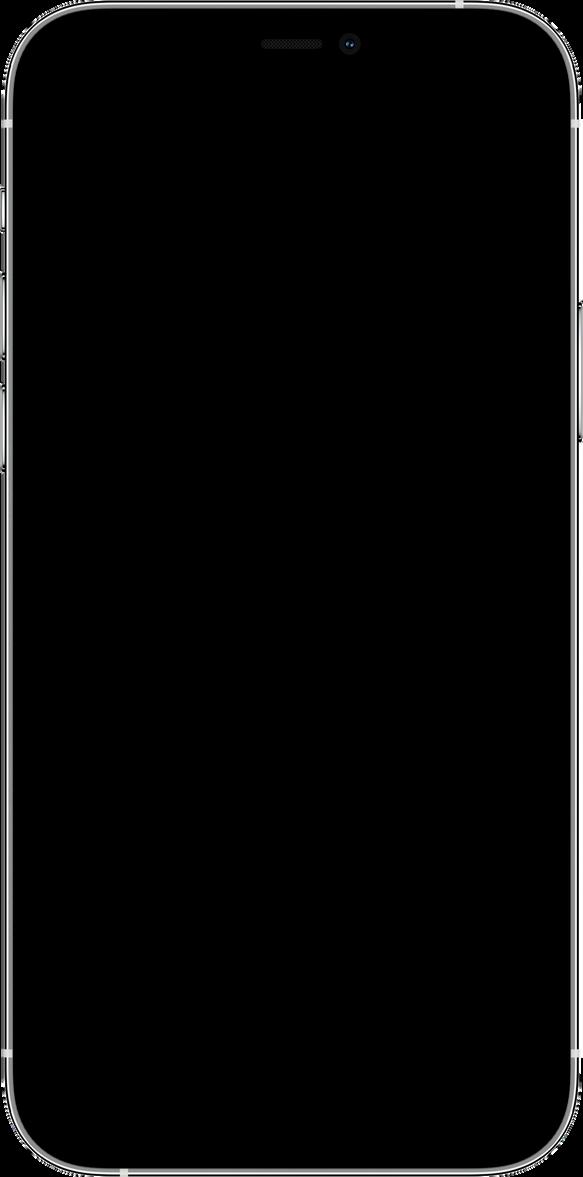
A comprehensive content creation package for authors that includes:
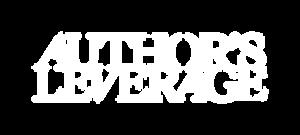
A strategy, planning, and tech prep call A remote filming session
Post-production editing with your branding 30 professionally produced short form videos
Delivered within 14 days
Grab Your Free eBook: 5 Ways to Get More Bang for Your Book





























 Excerpt from The Ultimate On-Camera Guidebook: Hosts*Experts*Influencers by Jacquie Jordan (@TVGuestpert) & Shannon O’Dowd (@theshannonodowd)
Excerpt from The Ultimate On-Camera Guidebook: Hosts*Experts*Influencers by Jacquie Jordan (@TVGuestpert) & Shannon O’Dowd (@theshannonodowd)








